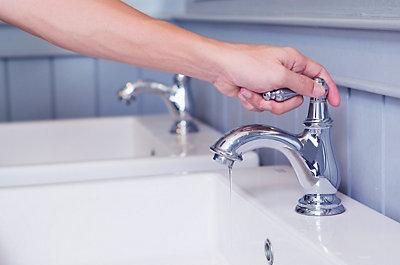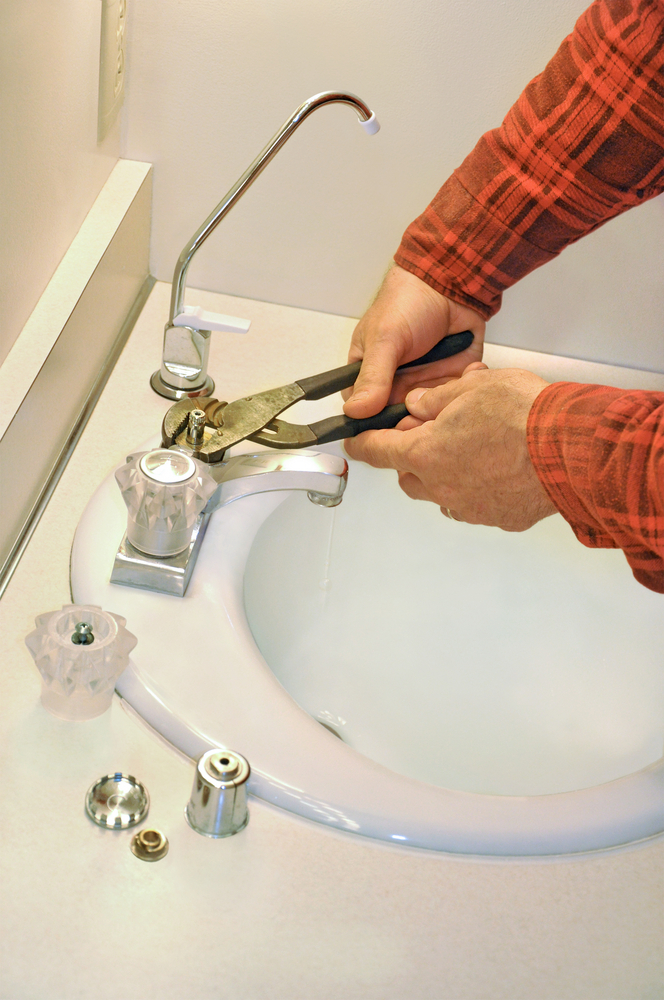How It's Mandatory to Correct a Dripping Faucet
How It's Mandatory to Correct a Dripping Faucet
Blog Article
The article author is making a number of good points relating to Why Are My Faucets Dripping (And Can I Fix It Myself)? as a whole in this article on the next paragraphs.

Leaking taps might seem like a minor aggravation, however their impact exceeds just the inconvenience of the sound. From drainage to sustaining unnecessary economic expenses and health and wellness threats, neglecting a trickling tap can lead to different effects. In this article, we'll explore why it's important to address this usual household problem immediately and successfully.
Wastefulness of Water
Ecological Effect
Leaking taps add substantially to water waste. According to the Epa (EPA), a single faucet dripping at one drip per secondly can throw away greater than 3,000 gallons of water each year. This not only stress water sources yet likewise influences ecosystems and wildlife based on them.
Step-by-Step Overview to Fixing a Dripping Faucet
Devices Called for
Prior to attempting to deal with a dripping tap, collect the essential devices, including a flexible wrench, screwdrivers, substitute components (such as washing machines or cartridges), and plumber's tape.
Typical Tap Issues and Their Solutions
Recognize the sort of faucet and the specific issue causing the drip. Usual troubles consist of damaged washing machines, corroded shutoff seats, or malfunctioning O-rings. Refer to maker instructions or online tutorials for detailed assistance on repair services.
Financial Expenses
Boosted Water Bills
Beyond the ecological effect, trickling taps can blow up water costs significantly. The accumulated wastage with time translates into greater energy expenses, which might have been stayed clear of with prompt fixings.
Potential Residential Property Damage
Additionally, prolonged leaking can bring about harm to components and surfaces bordering the faucet. Water buildup can trigger discoloration, deterioration, and even architectural problems if left unattended, causing extra repair costs.
Health and wellness Concerns
Mold and Mold Growth
The continuous visibility of dampness from a dripping faucet creates a suitable setting for mold and mold growth. These fungi not just compromise indoor air top quality however also present health risks, particularly for people with respiratory problems or allergies.
Waterborne Diseases
Stagnant water in dripping faucets can end up being a breeding ground for germs and other pathogens, boosting the threat of waterborne conditions. Contaminants such as Legionella bacteria flourish in stagnant water, possibly leading to severe diseases when consumed or breathed in.
DIY vs. Specialist Repair work
Pros and Cons of Do It Yourself Repair Service
While some might attempt to repair a trickling faucet themselves, do it yourself repair work come with their own set of obstacles. Without correct understanding and devices, DIY attempts can worsen the problem or lead to incomplete repairs, extending the trouble.
Advantages of Working With an Expert Plumber
Employing an expert plumber ensures that the underlying source of the dripping tap is attended to properly. Plumbers possess the expertise and devices to detect and repair faucet problems efficiently, saving time and decreasing the danger of further damage.
Ecological Obligation
Specific Contribution to Preservation
Taking duty for dealing with trickling taps lines up with broader efforts toward water preservation and environmental sustainability. Every person's actions collectively make a considerable effect on preserving precious resources.
Sustainable Living Practices
By prioritizing punctual repairs and taking on water-saving habits, individuals contribute to sustainable living practices that benefit both present and future generations.
Preventive Measures
Routine Upkeep Tips
To prevent trickling faucets, carry out routine maintenance such as cleaning up aerators, examining for leakages, and changing damaged parts promptly. Furthermore, take into consideration setting up water-saving tools or upgrading to a lot more effective components.
Significance of Prompt Repair Works
Addressing trickling taps as soon as they're noticed protects against further water wastefulness and potential damages, inevitably conserving both water and cash in the future.
Impact on Property Worth
Assumption of Well-Maintained Residential Or Commercial Property
Maintaining a building in good condition, including dealing with upkeep problems like leaking taps, improves its perceived value and value amongst potential buyers or lessees.
Influence on Resale Value
Properties with well-kept plumbing components, including taps, command higher resale worths in the realty market. Attending to dripping taps can add to a positive perception throughout property inspections and negotiations.
Verdict
Dealing with a dripping faucet goes beyond simple convenience; it's a vital action toward saving water, lowering monetary costs, and protecting health and property. Whether through do it yourself repair services or professional aid, doing something about it to take care of dripping taps is a tiny yet impactful method to advertise accountable stewardship of sources and add to a healthier, much more lasting future.
How to Fix a Dripping or Leaky Faucet
A leaking faucet is one of the most common problems that homeowners encounter, but it being commonplace doesn’t make it any less annoying. The constant drip drip drip of a leaking bathtub faucet, showerhead, or sink tap can disturb your home’s serenity. Left neglected, a dripping faucet can also result in higher water bills and discoloration or mold growth in your sink or plumbing fixtures.
Fortunately, you don’t have to be a trained plumber to know how to stop a dripping faucet. With some basic tools, replacement parts, and a little patience, leaky faucet repair is a breeze. In this article, we’ll explain what causes dripping faucets and how you can fix them.
What Causes a Leaking Faucet?
Kitchen and bathroom faucets come in all manner of designs, but most involve some combination of valves, O-rings, seals, and washers. The O-ring is usually the weakest link, but any one of these pieces can wear down over time. Heat, moisture, temperature fluctuations, minerals, mold, and movement can contribute to warping and corrosion, breaking the watertight seal. This just comes with the territory of being a homeowner. Everything is always subject to wear and tear, and some component parts of your appliances and fixtures need to be replaced on occasion. At least replacement O-rings are cheap!
More rarely, dripping faucets can be a symptom of excessively high water pressure. Were this the case in your home, you would probably notice that the leak is not isolated to one faucet. Water pressure issues are harder to resolve on your own. We recommend contacting a professional plumber if you suspect your water pressure is too high.
How to Fix a Dripping Faucet
Pipe wrench or monkey wrench Allen wrench set Screwdrivers Old towel or rag Shut off the water.
Before you do anything, you need to turn off the water to keep from drenching your kitchen or bathroom. You should find a valve under the sink and against the wall. Once you’ve turned this valve, try turning the faucet on to confirm that the water source has been cut off.
If you can’t locate your local valve for the faucet you’re working on, you can always shut off the water to the house at the main valve. Of course, this will prohibit anyone from using the sinks, showers, or toilets while you’re working on the faucet that’s giving you trouble.
Plug or block the drain.
You’ll be disassembling the faucet and removing some small bits of hardware. Plug the drain with a stopper or rag to avoid the possibility of a small screw falling into your P-trap.
Take apart the faucet assembly.
There are several varieties of kitchen and bathroom faucets, each with its own manner of assembly. For detailed instructions on how to disassemble your faucet, you can refer to the fixture’s manual or contact the manufacturer. If you know whether you have a ball, disc, cartridge, or compression faucet, you can find detailed schematics online.
In general, you need to begin by removing the faucet handles. You might notice a small screw that you’ll need to remove with a screwdriver or Allen wrench. If you don’t see any visible securing hardware, it’s likely hidden under a decorative cap that can be unscrewed or popped off with flathead screwdriver.
Remove each piece methodically, consulting a schematic when necessary. Take notes or arrange the pieces in such a way to make it easier to correctly reassemble the faucet later.
Remove the cartridge.
Once you’ve removed the handles and securing hardware, you should be able to remove the valve cartridge or stem. Some cartridges will slide right out. Other faucet models will require you to loosen a nut with a pipe wrench before you can remove the valve stem.
Examine the exposed hardware.
With the cartridge or stem removed, inspect the component parts. Check the rubber O-rings for wear and tear. Also examine the seat washer for corrosion or other damage. These pieces are usually the responsible parties for a dripping faucet, but it’s worth inspecting the other component parts while you have the faucet disassembled.
Find replacement parts.
Once you’ve identified which faucet component has failed, find an identical replacement. Your local hardware store should have O-rings, seat washers, and other standard components in stock. If you have a luxury or uncommon faucet, you may have to contact the manufacturer for a replacement part.
It’s a good idea to take your old parts with you to the hardware store so you can compare them with the store’s inventory and be sure you’re purchasing the correct replacement.
Reassemble the faucet.
With your new parts in hand, reconstruct the faucet and handles. Don’t be tempted to overtighten screws or nuts. You might think this could create a better seal, but it can instead damage or bend a delicate part of the assembly and create a new problem for you.
Turn on the water and test the faucet.
The only thing left to do is test your work. Unplug the sink, turn the water back on, and try the faucet. Congratulate yourself on a job well done!
https://www.libertyhomeguard.com/how-to-fix-a-dripping-or-leaky-faucet/

I hope you enjoyed reading our part about 4 Common Reasons for a Leaky Faucet. Many thanks for taking a few minutes to read our article post. Do you know about anybody else who is inquisitive about Leaky Faucets: Why They Happen & What to Do About Them? Take a moment to promote it. Thank you for your time invested reading it.
Report this page